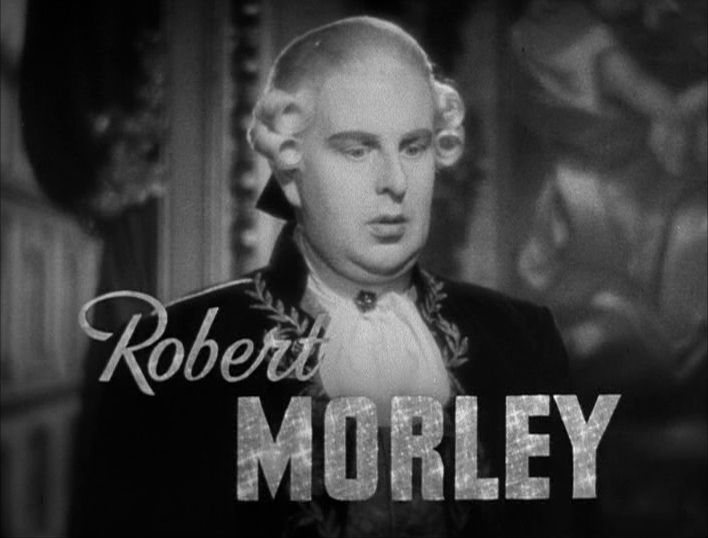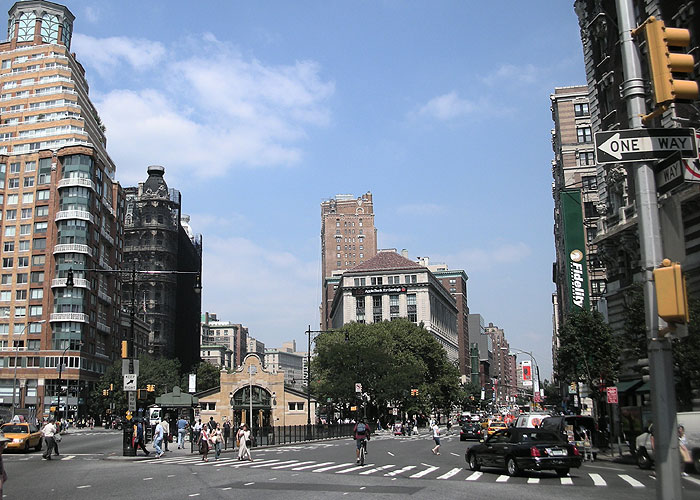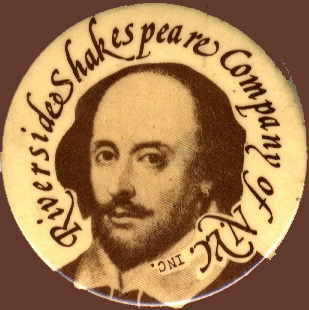|
Fulton Theatre
The Fulton Theatre was a Broadway theatre located at 210 West 46th Street in Manhattan, New York City, that was opened in 1911. It was renamed the Helen Hayes Theatre in 1955. The theatre was demolished in 1982. After the former Little Theatre on 44th Street became the current Helen Hayes Theatre, the Fulton Theatre was sometimes referred to as the First Helen Hayes Theatre. History Built by the architects Herts & Tallant for Henry B. Harris and Jesse Lasky, it was originally opened on April 27, 1911, under the name Folies-Bergere as a dinner theatre with vaudeville. The building featured three murals and a color scheme by leading American muralist William de Leftwich Dodge. Eighteen-year-old Mae West was discovered here by ''The New York Times'' at her Broadway debut on September 22, 1911. Closing after that, the theatre reopened on October 20, 1911, as the Fulton Theatre, a conventional playhouse. The theatre was managed by Abraham L. Erlanger from 1921, until his death i ... [...More Info...] [...Related Items...] OR: [Wikipedia] [Google] [Baidu] |
New York City
New York, often called New York City (NYC), is the most populous city in the United States, located at the southern tip of New York State on one of the world's largest natural harbors. The city comprises five boroughs, each coextensive with a respective county. The city is the geographical and demographic center of both the Northeast megalopolis and the New York metropolitan area, the largest metropolitan area in the United States by both population and urban area. New York is a global center of finance and commerce, culture, technology, entertainment and media, academics, and scientific output, the arts and fashion, and, as home to the headquarters of the United Nations, international diplomacy. With an estimated population in 2024 of 8,478,072 distributed over , the city is the most densely populated major city in the United States. New York City has more than double the population of Los Angeles, the nation's second-most populous city. [...More Info...] [...Related Items...] OR: [Wikipedia] [Google] [Baidu] |
Bijou Theatre (Manhattan, 1917)
The Bijou Theatre was a former Broadway theater in New York City that opened in 1917 and was demolished in 1982. It was built by the Shubert family in 1917 at 209 West 45th Street, and was the smallest of the houses they operated with a capacity of 603. Although it did not keep the planned name of the ''Theatre Francais'', it retained its French decor. It was one of three theaters that hosted the premiere season of the musical '' Fancy Free''—but primarily it presented plays by many writers, including Sacha Guitry, John Galsworthy, A. A. Milne, James M. Barrie, Herman J. Mankiewicz, Leslie Howard, Anton Chekhov, Henrik Ibsen, Luigi Pirandello, Graham Greene, Eugene O'Neill, William Saroyan, and Seán O'Casey. The Oscar-winning British film '' The Red Shoes'' played the Bijou for 107 weeks, from October 21, 1948, to November 13, 1950. Starting on November 16, 1950, as the Bijou, it hosted the film ''Cyrano de Bergerac'', starring José Ferrer.''The New York Times.'' Novemb ... [...More Info...] [...Related Items...] OR: [Wikipedia] [Google] [Baidu] |
Leslie Stokes
Leslie Stokes was an English playwright and BBC radio producer and director. As a young man Leslie Stokes was an actor and later became a playwright and BBC radio producer and director. Together with his brother, author and playwright Sewell Stokes Francis Martin Sewell Stokes (16 November 1902, London – 2 November 1979, London) was an English novelist, biographer, playwright, screenwriter, broadcaster and prison visitor. He collaborated on a number of occasions with his brother, Lesli ..., he co-wrote a number of plays, including the success ''Oscar Wilde (play), Oscar Wilde'', starring Robert Morley as Wilde. It was this play which launched Robert Morley's career as a stage actor on both sides of the Atlantic. The film ''Oscar Wilde (film), Oscar Wilde'' (1960) was based on the Stokes brothers' play. External links * {{DEFAULTSORT:Stokes, Leslie English radio producers English dramatists and playwrights Place of birth missing Year of birth missing Year of death ... [...More Info...] [...Related Items...] OR: [Wikipedia] [Google] [Baidu] |
Oscar Wilde (play)
''Oscar Wilde'' is a 1936 play written by Leslie and Sewell Stokes. It is based on the life of the Irish playwright Oscar Wilde in which Wilde's friend, the controversial author and journalist Frank Harris, appears as a character. The play, which contains much of Wilde's actual writings, starts with Wilde's literary success and his friendship with Lord Alfred Douglas, turns into a courtroom melodrama, and ends with Wilde as a broken alcoholic after two years in prison. Productions Owing to the play's subject matter it was never granted a licence by the Lord Chamberlain and could, therefore, only be staged in England at a theatre club where membership was required. The play's first production at London's Gate Theatre Studio in 1936 starred Robert Morley as Wilde and was produced by Norman Marshall. Opening on 29 September, the play ran for six weeks and proved to be one of the theatre's most successful productions. Later in New York in 1938, again with Morley in the title ro ... [...More Info...] [...Related Items...] OR: [Wikipedia] [Google] [Baidu] |
Robert Morley
Robert Adolph Wilton Morley (26 May 1908 – 3 June 1992) was an English actor who enjoyed a lengthy career in both Britain and the United States. He was frequently cast as a pompous English gentleman representing the Establishment, often in supporting roles. In 1939 he received an Academy Awards, Academy Award nomination for Academy Award for Best Supporting Actor, Best Supporting Actor for his portrayal of King Louis XVI in ''Marie Antoinette (1938 film), Marie Antoinette''. In ''Movie Encyclopedia'', film critic Leonard Maltin describes Morley as "recognisable by his ungainly bulk, bushy eyebrows, thick lips and double chin, ... particularly effective when cast as a pompous windbag." Ephraim Katz in his ''International Film Encyclopaedia'' describes Morley as "a rotund, triple-chinned, delightful character player of the British and American stage and screen." In his autobiography, ''Responsible Gentleman'', Morley said his stage career started with managements valuing his a ... [...More Info...] [...Related Items...] OR: [Wikipedia] [Google] [Baidu] |
Hayes Theater
The Hayes Theater (formerly the Little Theatre, New York Times Hall, Winthrop Ames Theatre, and Helen Hayes Theatre) is a Broadway theater at 240 West 44th Street in the Theater District of Midtown Manhattan in New York City, New York, U.S. Named for actress Helen Hayes, the venue is operated by Second Stage Theater. It is the smallest Broadway theater, with 597 seats across two levels. The theater was constructed in 1912 for impresario Winthrop Ames and designed by Ingalls & Hoffman in a neo-Georgian style. The original single-level, 299-seat configuration was modified in 1920, when Herbert J. Krapp added a balcony to expand the Little Theatre. The theater has served as a legitimate playhouse, a conference hall, and a broadcasting studio throughout its history. The facade and parts of the theater's interior are New York City landmarks. The facade is made largely of red brick. The main entrance is through an arch on the eastern portion of the ground-floor; the rest o ... [...More Info...] [...Related Items...] OR: [Wikipedia] [Google] [Baidu] |
New York Daily News
The ''Daily News'' is an American newspaper based in Jersey City, New Jersey. It was founded in 1919 by Joseph Medill Patterson in New York City as the ''Illustrated Daily News''. It was the first U.S. daily printed in Tabloid (newspaper format), tabloid format, and reached its peak circulation in 1947, at 2.4 million copies a day. it was the eleventh-highest circulated newspaper in the United States. For much of the 20th century, the paper operated out of the historic art deco Daily News Building with its large globe in the lobby. Today's ''Daily News'' is not connected to the earlier ''New York Daily News (19th century), New York Daily News'', which shut down in 1906. The ''Daily News'' is owned by parent company Daily News Enterprises. This company is owned by Alden Global Capital and was formed when Alden, which also owns news media publisher Digital First Media, purchased then-owner Tribune Publishing in May 2021 and then separated the ''Daily News'' from Tribune to form ... [...More Info...] [...Related Items...] OR: [Wikipedia] [Google] [Baidu] |
Joseph Papp
Joseph Papp (born Joseph Papirofsky; June 22, 1921 – October 31, 1991) was an American theatrical producer and director. Papp is a pioneering figure in American theater, known for creating Shakespeare in the Park, which aimed to make classical theater accessible to all people by producing free-of-charge performances. He was a known advocate for non-traditional and diverse casting practices. He established The Public Theater in what had been the Astor Library Building in Lower Manhattan. There Papp created a year-round producing home to focus on new plays and musicals. Eventually, one of the six performance spaces inside the Public Theater was renamed Joe's Pub in honor of Joseph Papp. It continues to host live performances across a wide range of art forms. Among numerous examples of these were the works of David Rabe, Ntozake Shange's ''For Colored Girls Who Have Considered Suicide When the Rainbow Is Enuf'', Charles Gordone's '' No Place to Be Somebody'' (the first off ... [...More Info...] [...Related Items...] OR: [Wikipedia] [Google] [Baidu] |
Upper West Side
The Upper West Side (UWS) is a neighborhood in the borough of Manhattan in New York City. It is bounded by Central Park on the east, the Hudson River on the west, West 59th Street to the south, and West 110th Street to the north. The Upper West Side is adjacent to the neighborhoods of Hell's Kitchen to the south, Columbus Circle to the southeast, and Morningside Heights to the north. Like the Upper East Side opposite Central Park, the Upper West Side is an affluent, primarily residential area with many of its residents working in commercial areas of Midtown and Lower Manhattan. Similar to the Museum Mile district on the Upper East Side, the Upper West Side is considered one of Manhattan's cultural and intellectual hubs, with Columbia University and Barnard College located just to the north of the neighborhood, the American Museum of Natural History located near its center, the New York Institute of Technology in the Columbus Circle proximity and Lincoln Center for the Per ... [...More Info...] [...Related Items...] OR: [Wikipedia] [Google] [Baidu] |
Riverside Shakespeare Company
The Riverside Shakespeare Company of New York City was founded in 1977 as a professional (AEA) theatre company on the Upper West Side of New York City, by W. Stuart McDowell and Gloria Skurski. Focusing on Shakespeare plays and other classical repertoire, it operated until 1997. __TOC__ Establishment and heritage Founded with a core of graduates from the University of California at Berkeley, the Riverside Shakespeare Company of New York City opened its first production, ''Romeo and Juliet'', in August 1977 in Riverside Park. It then commenced a free parks tour through Manhattan, performing in Washington Square, John Jay Park, Fort Tryon Park, and Columbia University. The production was directed by McDowell. An opening-night announcement in ''The New York Times'' read: The Riverside Shakespeare Company is taking up where Joseph Papp left off this summer by presenting free Shakespeare in the park. ... The production will be done in traveling minstrel style, evocative of S ... [...More Info...] [...Related Items...] OR: [Wikipedia] [Google] [Baidu] |
The Shakespeare Center
The Shakespeare Center was the home of the Riverside Shakespeare Company, an Equity professional theatre company in New York City, established in 1980 and dedicated in 1982, when the company established its center of theatre production and advanced actor training at the 90-year-old West-Park Presbyterian Church on Amsterdam Avenue at West 86th Street. The Shakespeare Center's facilities consisted of the main offices of the Riverside Shakespeare Company, costume and set construction and storage rooms, a main lobby (shared with the church), and a theatre in the balcony of the church equipped with lighting and sound amplification. Design and construction Within the theatre itself, two wooden towers were constructed to the sides of the audience area for follow spots and, on occasion, musicians. Seating surrounded the thrust stage on three sides, with no seat more than 18 feet from the stage. There was a crossover under the upstage edge, with traps under the stage. Although the th ... [...More Info...] [...Related Items...] OR: [Wikipedia] [Google] [Baidu] |
Marquis Theatre
The Marquis Theatre is a Broadway theatre, Broadway theater on the third floor of the New York Marriott Marquis hotel in the Theater District, Manhattan, Theater District of Midtown Manhattan in New York City, New York, U.S. Opened in 1986, it is operated by the Nederlander Organization. There are about 1,612 seats in the auditorium, spread across an orchestra level and a balcony. The Marquis was designed by John C. Portman Jr., who designed the Marriott Marquis and included the theater to increase the size of the hotel. The theater's main entrance and box office are at 210 West 46th Street. The box office is at ground level, and there are escalators leading from the ground floor to the auditorium. Due to a lack of space, the Wing (theater), wings on each side of the proscenium arch are smaller than mandated by city building codes. The theater also has no freight elevator, no dedicated restroom facilities, and small hallways. A theater was proposed on the site in 1973 as part o ... [...More Info...] [...Related Items...] OR: [Wikipedia] [Google] [Baidu] |







